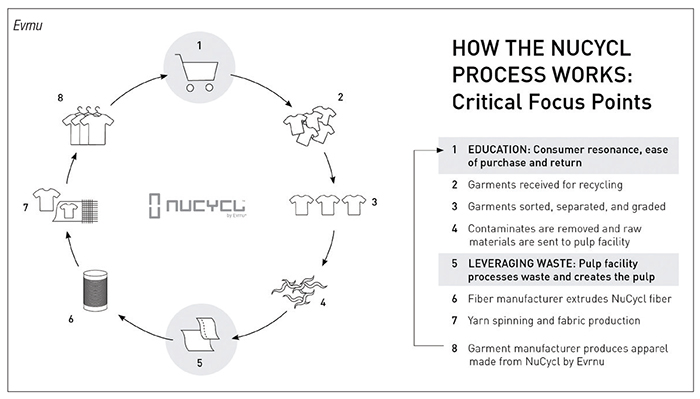A process developed by Evrnu (Seattle, Wash.; www.evrnu.com) to regenerate cotton fibers from waste fabric and post-consumer garments has been used to produce ton quantities of recycled cotton fiber for testing. An economically viable process for recycling cotton would have the environmental benefits of drastically reducing the amount of landfilled or incinerated fabric, which currently totals millions of tons annually, while also reducing the amount of land and water required to grow the cotton plants.
Evrnu has developed an end-to-end process, known as NuCycl, that includes sorting fabrics to identify the types of fibers in the textile, shredding the textiles and removing the dyes and additives (diagram). The cotton then enters a reactor, where it is depolymerized, using a range of solvent blends and ionic liquids, to create a pulp that is finally extruded into new fiber.

“We’ve used a targeted innovation approach to deconstruct cotton textiles at the molecular level to create a range of regenerated cellulose fibers with different molecular weights that are stronger and more durable than the original fabrics,” says Christopher Stanev, co-founder of Evrnu. “The NuCycl process can be run with modest retrofitting at existing pulp mills,” he adds, so “paper mills can convert existing lines to garment recycling, rather than shutting down as demand for paper declines.”
Evrnu is partnering with large retailers and waste companies to collect waste textiles, unsold material and post-consumer garments, as well as with consumer brands, such as Stella McCartney, Target, Levi’s and Adidas, to make clothing from recycled fibers. The company now offers commercial licenses on its technology to players in the textile industry.
In addition to cotton and natural-fiber recycling, the company is also developing other textile-recycling processes for materials such as synthetic fibers (polyester), polyester/cotton blends and Lycra.